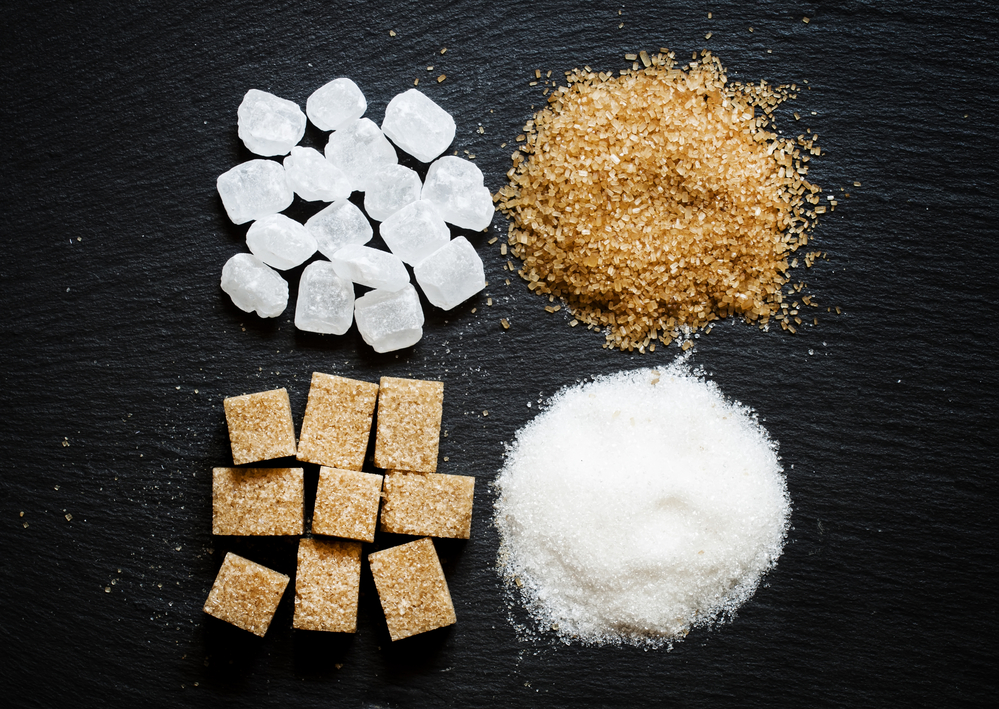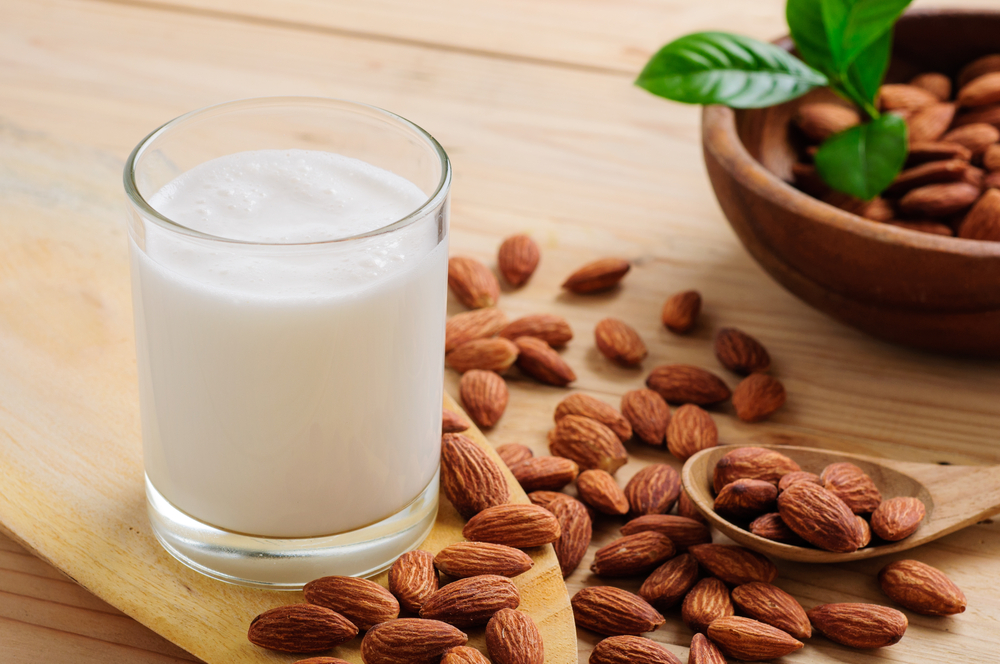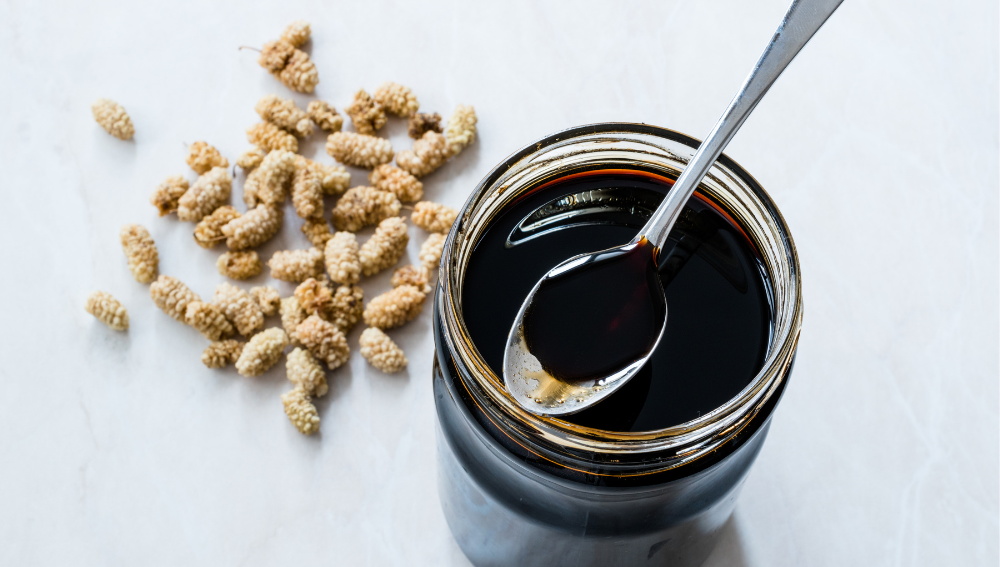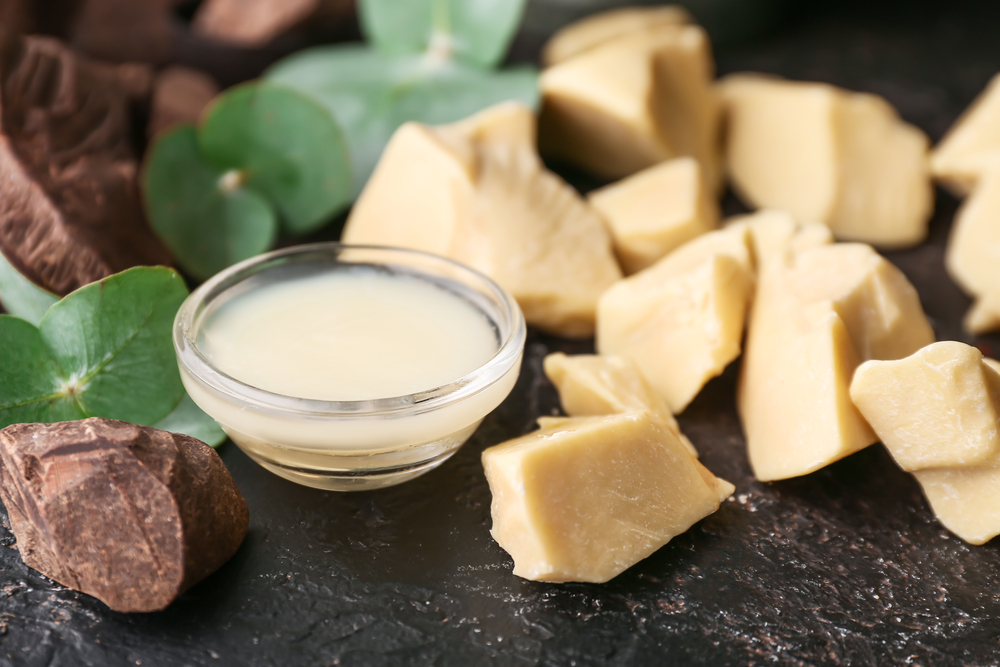As someone who is lactose intolerant, finding a milk alternative that tastes like the real thing can be a challenge. While there are many lactose-free milk options available, not all of them are created equal when it comes to taste.
In this article, I will explore which lactose-free milk tastes the most like milk and provide some key takeaways to help you make an informed decision when choosing a milk alternative.

Understanding lactose intolerance is important when it comes to choosing a milk alternative. Lactose intolerance is a condition where the body is unable to fully digest lactose, a sugar found in milk and dairy products.
This can cause a range of symptoms, including bloating, gas, and diarrhea. For those with lactose intolerance, finding a milk alternative that is easy to digest and tastes good is essential.
The need for lactose-free milk has led to a rise in popularity of dairy-free alternatives, with many options available on the market.
However, with so many choices, it can be overwhelming to know which one to choose. In the next section, we will compare the taste of different lactose-free milk options to determine which one tastes the most like milk.
Key Takeaways
- Lactose intolerance is a condition where the body is unable to fully digest lactose, a sugar found in milk and dairy products.
- Finding a milk alternative that is easy to digest and tastes good is essential for those with lactose intolerance.
- In the next section, we will compare the taste of different lactose-free milk options to determine which one tastes the most like milk.
Understanding Lactose Intolerance
I am sure that many of us have heard of lactose intolerance at some point in our lives. Simply put, lactose intolerance is the inability to digest lactose, a sugar found in milk and other dairy products. This can lead to uncomfortable symptoms such as bloating, gas, and diarrhea.
The cause of lactose intolerance is the lack of lactase, an enzyme produced in the small intestine that breaks down lactose into glucose and galactose. Without lactase, lactose remains undigested and causes symptoms.
There are three types of lactose intolerance: primary, secondary, and congenital. Primary lactose intolerance is the most common and occurs when lactase production decreases over time.
Secondary lactose intolerance is caused by an injury or disease that damages the small intestine, while congenital lactose intolerance is a rare genetic disorder where the body does not produce any lactase at all.
While lactose intolerance is not a serious medical condition, it can be uncomfortable and inconvenient. Fortunately, there are many lactose-free milk options available that taste just like regular milk.
It is important to note that lactose-free milk is not the same as dairy-free milk. Lactose-free milk is still made from cow’s milk, but the lactose has been removed through the addition of lactase enzymes.
This means that lactose-free milk still contains the same nutrients as regular milk, such as calcium and vitamin D.
In summary, lactose intolerance is a common condition that occurs when the body is unable to digest lactose due to a lack of lactase enzyme. There are many lactose-free milk options available that taste just like regular milk and still contain important nutrients.
The Need for Lactose-Free Milk

As someone who is lactose intolerant, I know firsthand the discomfort that can come from consuming dairy milk. Many people experience similar symptoms, including bloating, gas, and diarrhea, due to the inability to digest lactose, a sugar found in milk.
For those with lactose intolerance, switching to lactose-free milk can be a game-changer. It allows us to enjoy the taste and nutritional benefits of milk without the uncomfortable side effects.
Lactose-free milk is made by adding lactase, the enzyme that breaks down lactose, to regular milk. This process breaks down the lactose into simpler sugars that are easier to digest.
But lactose-free milk isn’t just for those with lactose intolerance. Some people choose to consume it for other reasons, such as allergies to dairy or a desire to follow a dairy-free diet.
In fact, dairy-free milk alternatives have become increasingly popular in recent years, with many options available on grocery store shelves.
However, for those who still want the taste and texture of traditional dairy milk, finding a lactose-free milk that tastes similar can be a challenge.
That’s why many people wonder which lactose-free milk tastes the most like cow’s milk. In the following sections, we’ll explore some of the most popular lactose-free milk options and compare them to dairy milk.
Types of Lactose-Free Milk
When it comes to lactose-free milk, there are several options available in the market. Each type of milk has its own unique taste and texture, and it’s important to choose the one that suits your preferences and dietary needs.
In this section, I will discuss some of the most popular types of lactose-free milk.
Soy Milk
Soy milk is a popular lactose-free milk alternative made from soybeans. It has a creamy texture and a nutty flavor that is similar to cow’s milk. Soy milk is also a good source of protein, calcium, and vitamin D.
Almond Milk
Almond milk is another popular lactose-free milk alternative made from ground almonds and water. It has a slightly sweet and nutty flavor, and a thin, watery texture. Almond milk is low in calories and is a good source of vitamin E.
Oat Milk
Oat milk is a plant-based milk alternative made from whole oat grains and water. It has a creamy texture and a slightly sweet taste that is similar to cow’s milk. Oat milk is also a good source of fiber and is low in fat.
Rice Milk
Rice milk is a lactose-free milk alternative made from milled rice and water. It has a thin, watery texture and a slightly sweet taste. Rice milk is low in fat and is a good source of vitamin B12.
Cashew Milk
Cashew milk is a lactose-free milk alternative made from ground cashews and water. It has a creamy texture and a slightly sweet taste that is similar to cow’s milk. Cashew milk is also a good source of magnesium and vitamin E.
Coconut Milk
Coconut milk is a lactose-free milk alternative made from the flesh of mature coconuts. It has a thick, creamy texture and a sweet, nutty flavor. Coconut milk is high in fat and calories, but it is also a good source of fiber and iron.
Hemp Milk
Hemp milk is a lactose-free milk alternative made from hemp seeds and water. It has a slightly nutty flavor and a thin, watery texture. Hemp milk is a good source of protein and omega-3 fatty acids.
Macadamia Milk
Macadamia milk is a lactose-free milk alternative made from macadamia nuts and water. It has a creamy texture and a slightly sweet taste that is similar to cow’s milk. Macadamia milk is also a good source of healthy fats and vitamin E.
Quinoa Milk
Quinoa milk is a lactose-free milk alternative made from quinoa and water. It has a slightly nutty flavor and a thin, watery texture. Quinoa milk is a good source of protein and is low in fat.
Lactaid
Lactaid is a lactose-free milk alternative made from regular cow’s milk. It is treated with lactase, which breaks down lactose into simpler sugars that are easier to digest. Lactaid has the same taste and texture as regular cow’s milk, but it is easier to digest for people with lactose intolerance.
In conclusion, there are many types of lactose-free milk available in the market, each with its own unique taste and texture. Whether you prefer soy milk, almond milk, oat milk, or any other type of lactose-free milk, there is an option out there for you.
Taste Comparison of Lactose-Free Milks
As someone who has tried multiple lactose-free milk brands, I can confidently say that there are many options available that taste similar to cow’s milk.
However, there are some key differences in flavor and texture that may be important to consider when choosing a lactose-free milk.
In terms of flavor, some brands may have a slightly sweeter taste than cow’s milk, while others may have a more neutral taste. For example, the Taste of Home article recommends oat milk for its slightly sweet flavor, while soy milk has a more neutral taste. It really depends on personal preference.
Creaminess is also an important factor to consider. Some lactose-free milk brands may have a creamier texture than others, which can affect the overall taste and mouthfeel. For example, Lactaid and Fairlife both offer lactose-free milk with a creamier texture.
Texture is another aspect to consider when comparing lactose-free milks. Some brands may have a thinner consistency, while others may be thicker and more similar to whole milk. For example, Silk offers a lactose-free milk that has a creamy texture and is thicker than other plant-based milks.
Overall, the taste and texture of lactose-free milk can vary greatly depending on the brand and type of milk. It’s important to try different brands and types to find the one that best fits your personal taste preferences.
Nutritional Content
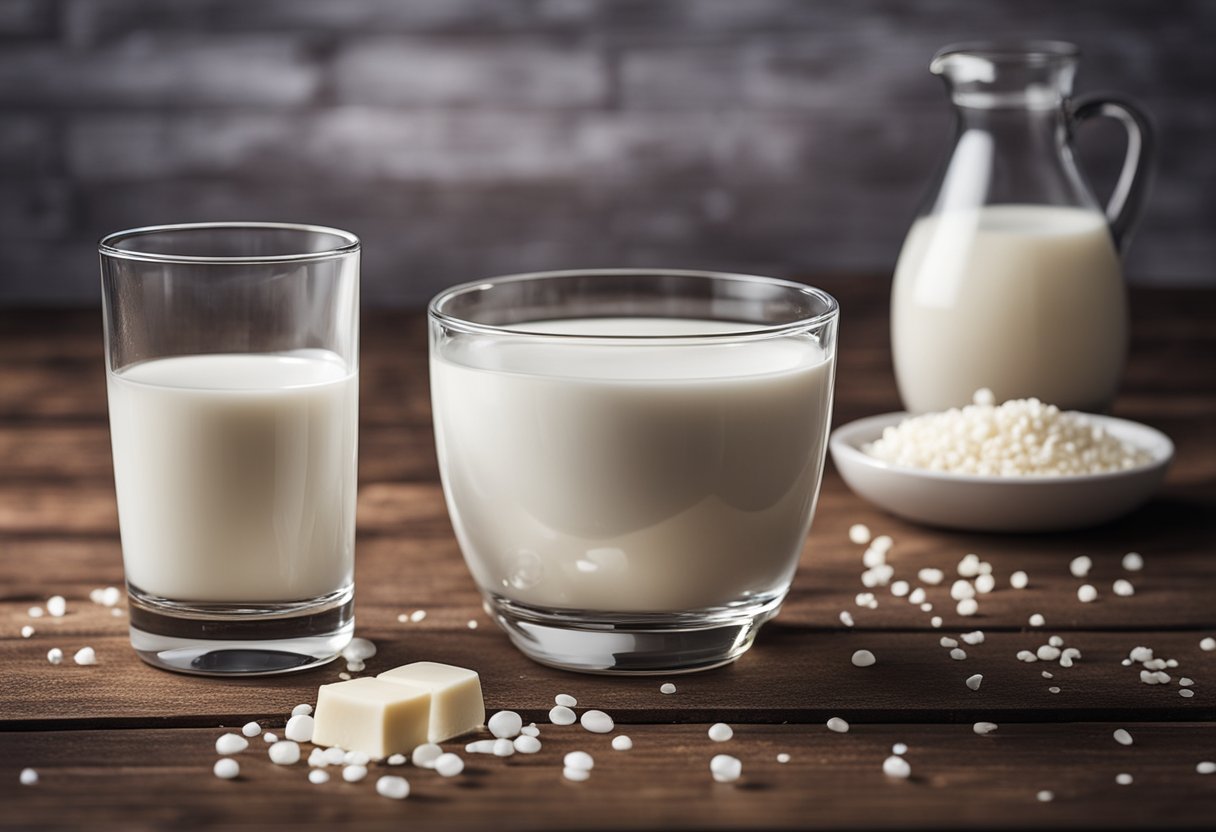
When it comes to nutritional content, lactose-free milk is very similar to regular milk. Both types of milk contain essential nutrients such as protein, calcium, vitamins, and minerals that are important for overall health.
Protein is an essential nutrient that helps build and repair tissues in the body. Lactose-free milk contains the same amount of protein as regular milk, which is about 8 grams per cup. This makes it a good source of protein for vegetarians and people who don’t consume meat.
Calcium is another important nutrient found in milk. It is essential for building strong bones and teeth, and lactose-free milk contains the same amount of calcium as regular milk. A cup of lactose-free milk provides about 30% of the recommended daily intake of calcium.
Lactose-free milk also contains healthy fats, which are important for maintaining good health. It is low in saturated fat and cholesterol, making it a heart-healthy choice.
In terms of calories and sugar, lactose-free milk is similar to regular milk. A cup of lactose-free milk contains about 100 calories and 12 grams of sugar, which is the same as a cup of regular milk.
Lactose-free milk is also a good source of vitamin D, which is important for bone health. It contains about 25% of the recommended daily intake of vitamin D per cup.
However, it is important to note that vitamin A and vitamin B12 are not naturally present in lactose-free milk, so it is important to get these nutrients from other sources.
Overall, lactose-free milk is a nutritious alternative to regular milk for people who are lactose intolerant or have trouble digesting lactose. It contains similar amounts of essential nutrients and is a good source of protein, calcium, and vitamin D.
Health Benefits and Concerns
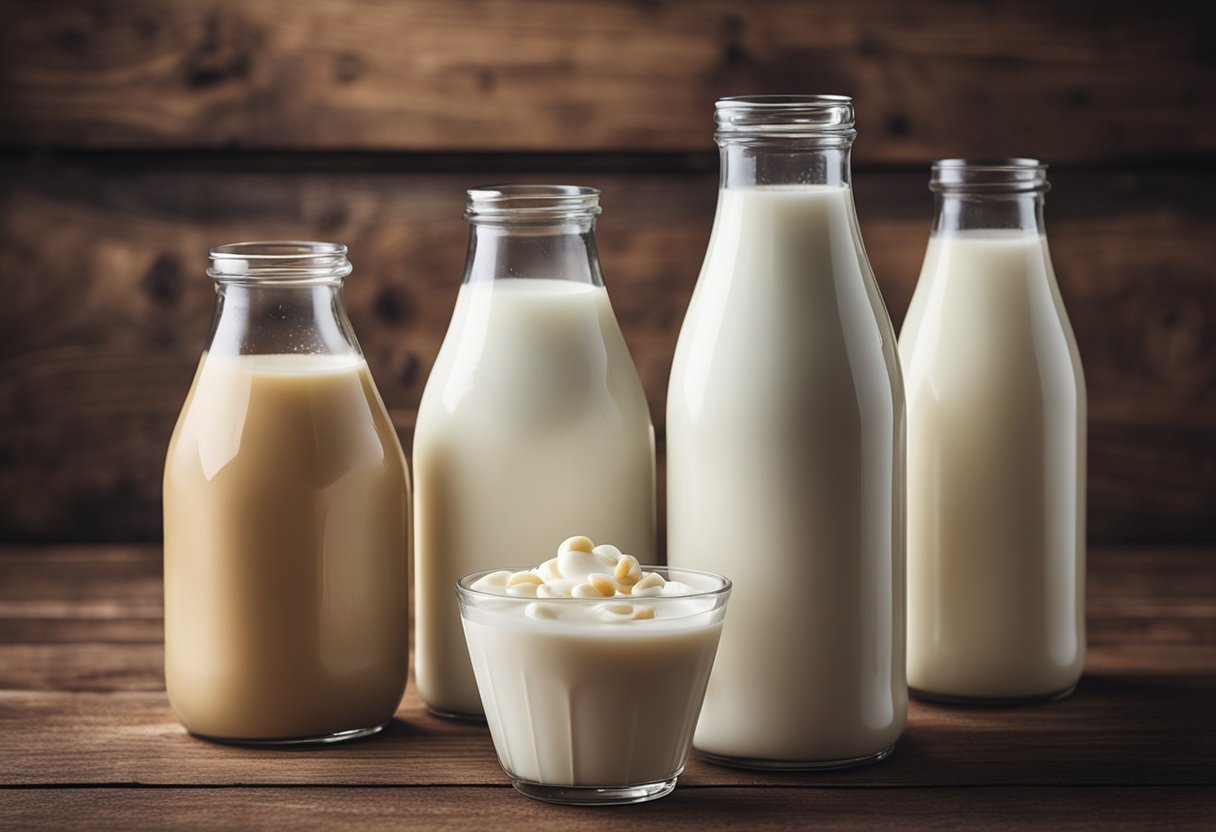
Lactose-free milk is a great option for people who are lactose intolerant or have a dairy allergy. It provides the same nutritional benefits as regular milk, but without the lactose that can cause digestive issues.
Here are some of the health benefits and concerns of lactose-free milk:
Health Benefits
- Provides essential nutrients: Lactose-free milk is a good source of calcium, vitamin D, and protein, which are all important for maintaining strong bones and muscles.
- Helps prevent osteoporosis: Calcium and vitamin D in lactose-free milk can help prevent osteoporosis, a condition that weakens bones and makes them more prone to fractures.
- Good for heart health: Studies have shown that consuming dairy products can help lower blood pressure and reduce the risk of heart disease. Lactose-free milk can provide these benefits without the lactose that can cause digestive issues.
Health Concerns
- Added sugars: Some brands of lactose-free milk may contain added sugars to improve the taste. It’s important to read the label and choose a brand that doesn’t contain too much added sugar.
- Not suitable for vegans: Lactose-free milk is still a dairy product, so it’s not suitable for vegans. However, there are plant-based milk alternatives available that are suitable for vegans.
- Not suitable for people with milk allergies: Lactose-free milk is still made from cow’s milk, so it’s not suitable for people with a milk allergy. They should choose a plant-based milk alternative instead.
Overall, lactose-free milk is a good option for people who are lactose intolerant or have a dairy allergy. It provides the same nutritional benefits as regular milk, without the lactose that can cause digestive issues.
However, it’s important to choose a brand that doesn’t contain too much added sugar and to keep in mind that it’s not suitable for vegans or people with milk allergies.
Using Lactose-Free Milk in Recipes
As someone who enjoys cooking and baking, I understand the importance of finding the right milk substitute when dealing with lactose intolerance. Fortunately, there are many lactose-free milk options available that can be used in a variety of recipes.
When it comes to substituting lactose-free milk for regular milk in recipes, it is important to keep in mind that the taste and texture may be slightly different. However, with a few adjustments, you can still achieve great results.
For baking, lactose-free milk can be used as a substitute for regular milk in most recipes. However, it is important to note that the fat content in lactose-free milk may be lower than regular milk, which can affect the texture of baked goods.
To compensate for this, you can add a tablespoon of melted butter or oil to the recipe.
In cooking, lactose-free milk can be used in place of regular milk in recipes such as creamy sauces and soups. It can also be used in place of heavy cream in some recipes, although the final result may be slightly less rich.
When it comes to desserts, lactose-free milk can be used to make ice cream, smoothies, and even coffee drinks. In fact, many coffee shops now offer lactose-free milk as an option for their customers.
Overall, lactose-free milk can be a great substitute for regular milk in a variety of recipes. With a few adjustments, you can still achieve delicious results without sacrificing taste or texture.
Popular Lactose-Free Milk Brands
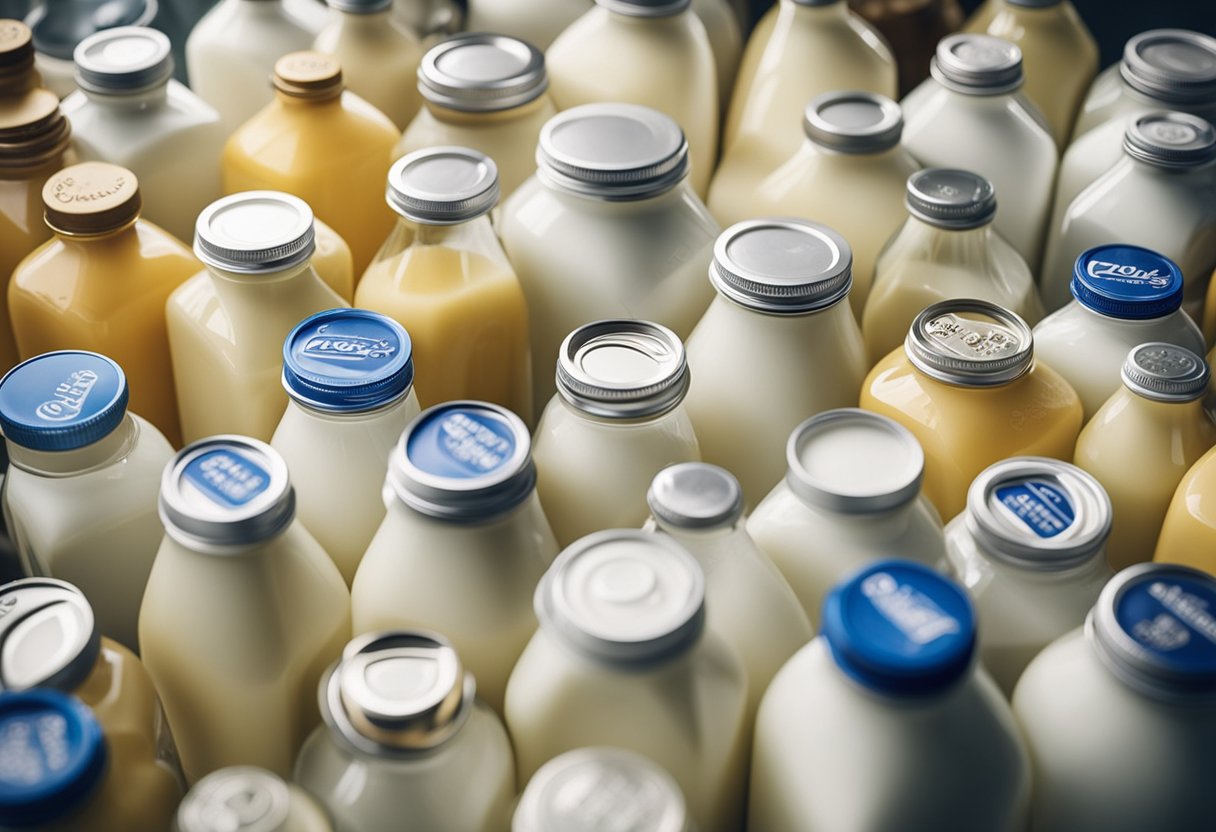
As someone who has tried various lactose-free milk brands, I can confidently say that there are several options available that taste just like real milk. Here are some of the most popular lactose-free milk brands that I recommend:
Fairlife
Fairlife is a lactose-free milk brand that is known for its ultra-filtered milk. It is made using a unique filtration process that removes lactose and sugars while retaining the protein and calcium found in real milk.
Fairlife lactose-free milk is available in whole, 2%, chocolate, and skim varieties. It is also available in organic and non-organic options. You can easily find Fairlife lactose-free milk at most grocery stores using their store locator.
Horizon
Horizon is another popular lactose-free milk brand that offers a wide variety of options including whole, 2%, chocolate, and vanilla.
Horizon lactose-free milk is made using organic milk and is free from GMOs, antibiotics, and added hormones. You can find Horizon lactose-free milk at most grocery stores.
Real Dairy Milk
Real Dairy Milk is a lactose-free milk brand that is known for its rich, creamy taste. It is made using real milk and is free from lactose, gluten, and soy. Real Dairy Milk is available in whole, 2%, and skim varieties. You can find Real Dairy Milk at most grocery stores.
Organic Milk
Organic milk is another great option for those who are lactose intolerant. Organic milk is made using milk from cows that have not been treated with antibiotics or hormones.
It is also free from pesticides and other harmful chemicals. Organic milk is available in whole, 2%, and skim varieties and can be found at most grocery stores.
Real Milk
If you are looking for a lactose-free milk that tastes just like real milk, then Real Milk is a great option. Real Milk is made using real milk and is free from lactose, gluten, and soy. It is available in whole, 2%, and skim varieties and can be found at most grocery stores.
Overall, there are several lactose-free milk brands available that taste just like real milk. Whether you prefer organic milk or ultra-filtered milk, there is a lactose-free milk brand out there that will meet your needs.
Environmental Impact of Lactose-Free Milk
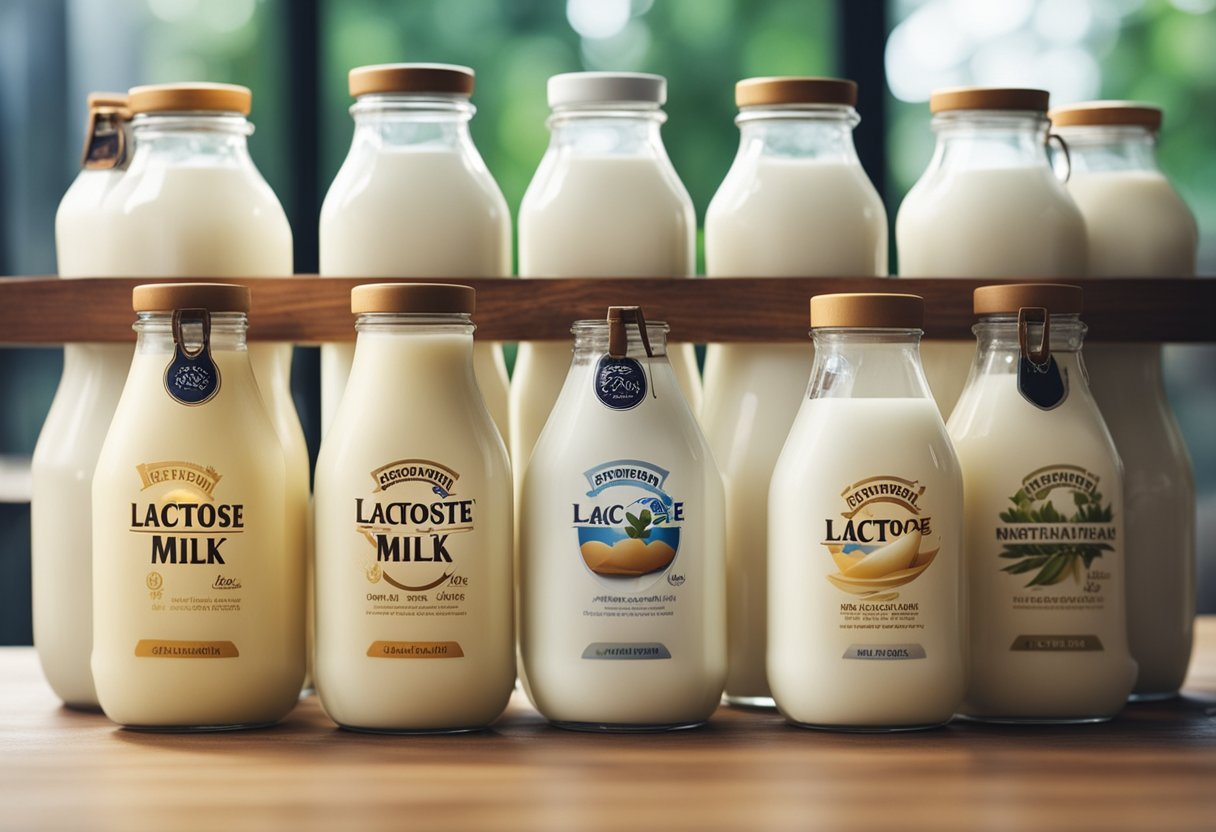
As someone who cares about the environment, I was curious about the impact of lactose-free milk compared to regular milk.
After doing some research, I found that the environmental impact of lactose-free milk varies depending on the type of milk used and the processing methods used to remove lactose.
Almond milk, which is a popular alternative to dairy milk, has a lower environmental impact than dairy milk in terms of water use and greenhouse gas emissions.
However, almond milk requires a lot of land to grow almonds, which can have negative impacts on the environment if not managed sustainably.
On the other hand, lactose-free milk made from cow’s milk has a similar environmental impact to regular milk in terms of land use and greenhouse gas emissions. However, the processing methods used to remove lactose from milk can have additional environmental impacts.
For example, some lactose-free milk is made using ultra-high temperature (UHT) processing, which requires a lot of energy and can have a higher carbon footprint than regular milk.
Another factor to consider is the use of emulsifiers in lactose-free milk. Emulsifiers are added to help stabilize the milk and improve its texture. However, some emulsifiers can have negative environmental impacts, such as contributing to water pollution.
Overall, the environmental impact of lactose-free milk depends on a variety of factors, including the type of milk used, the processing methods used, and the use of emulsifiers.
As a consumer, it’s important to consider these factors when choosing a lactose-free milk alternative.
Conclusion

After conducting a blind taste test comparing various lactose-free milk brands with regular cow’s milk, I have found that oat milk and almond milk are the closest in taste to dairy milk.
Oat milk has a creamy texture and a slightly sweet taste, making it a great substitute for dairy milk in baking and cooking. It is also high in fiber and contains more protein than almond milk. However, it may not be suitable for those with gluten allergies or sensitivities.
Almond milk, on the other hand, has a nutty flavor and a thinner consistency than dairy milk. It is low in calories and fat, making it a popular choice for those who are watching their weight. It is also a good source of vitamin E and calcium.
Other lactose-free milk alternatives, such as soy milk, rice milk, and coconut milk, may not taste as similar to dairy milk as oat milk and almond milk do.
However, they may still be suitable for those who are looking for a dairy-free alternative due to allergies, intolerances, or personal preferences.
Ultimately, the choice of lactose-free milk substitute depends on personal taste preferences and dietary restrictions. It is important to try different options and find the one that works best for you.
Frequently Asked Questions
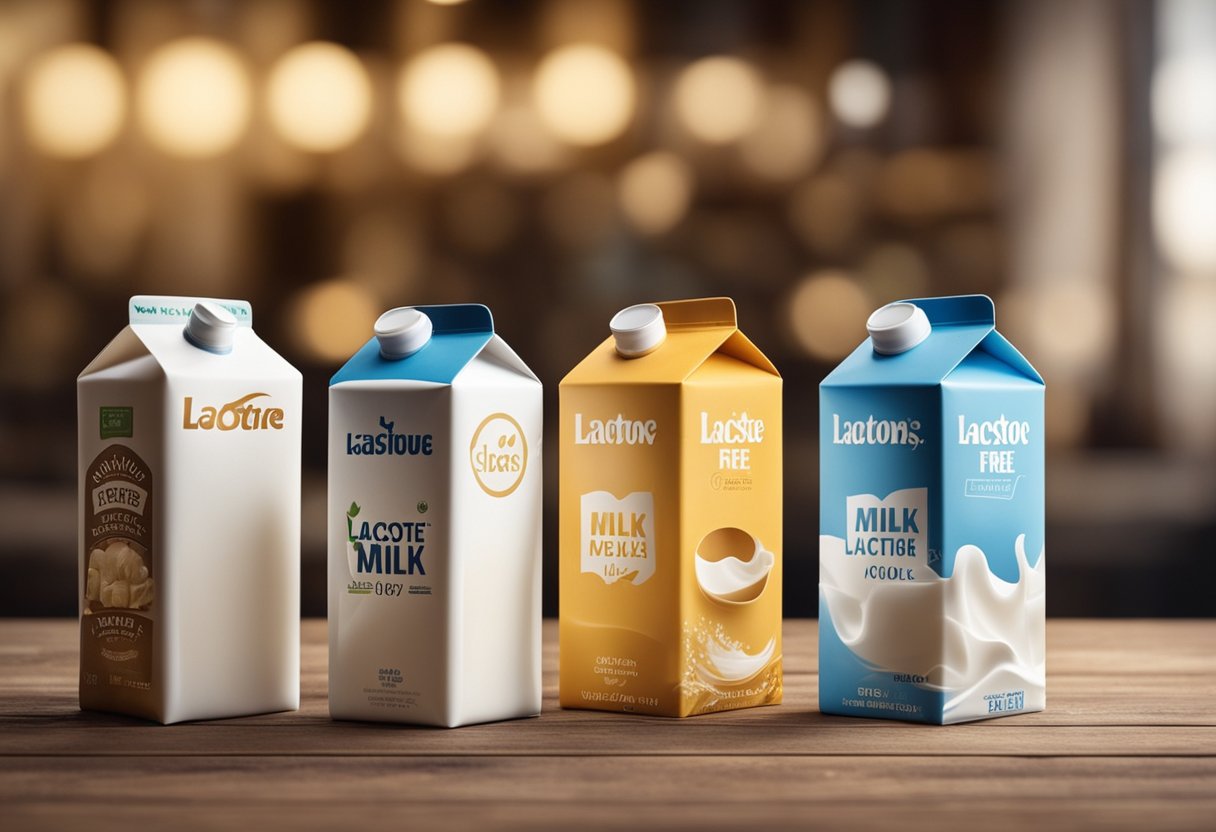
What are some good alternatives to regular milk for cereal?
If you’re looking for a dairy-free alternative for your cereal, there are plenty of options available. Some popular choices include almond milk, soy milk, rice milk, oat milk, and coconut milk.
Each of these options has its own unique taste and texture, so it’s worth trying a few to see which one you prefer.
Which non-dairy milk is the closest in taste to dairy milk?
Many people find that oat milk tastes the most similar to dairy milk in terms of both taste and texture. It has a creamy consistency and a slightly sweet, nutty flavor that is similar to cow’s milk.
Other options that are often compared to dairy milk include soy milk and almond milk.
What is the best non-dairy milk for cooking?
When it comes to cooking, the best non-dairy milk will depend on what you’re making. For savory dishes, unsweetened soy milk or oat milk can be a good choice because they have a neutral flavor that won’t overpower the other ingredients.
For sweet recipes, almond milk or coconut milk can add a nice flavor and texture.
What is the healthiest non-dairy milk option?
All non-dairy milks have their own unique nutritional profiles, so the healthiest option will depend on your individual needs. For example, soy milk is a good source of protein, while almond milk is low in calories and fat.
Oat milk is a good source of fiber, and coconut milk is high in healthy fats. It’s a good idea to read the nutrition labels and choose a non-dairy milk that fits your dietary goals.
Which non-dairy milk is the best for gut health?
If you’re looking for a non-dairy milk that is good for your gut health, you might want to consider a milk made from nuts or seeds.
Almond milk, for example, is high in vitamin E and magnesium, which can help support gut health. Cashew milk is also a good option, as it is high in healthy fats and protein.
Does Lactaid milk taste like regular milk?
Lactaid milk is a lactose-free milk that is designed to taste like regular milk. It is made by adding lactase, an enzyme that breaks down lactose, to regular milk.
Many people find that Lactaid milk tastes very similar to regular milk, although some people may notice a slight difference in taste.


